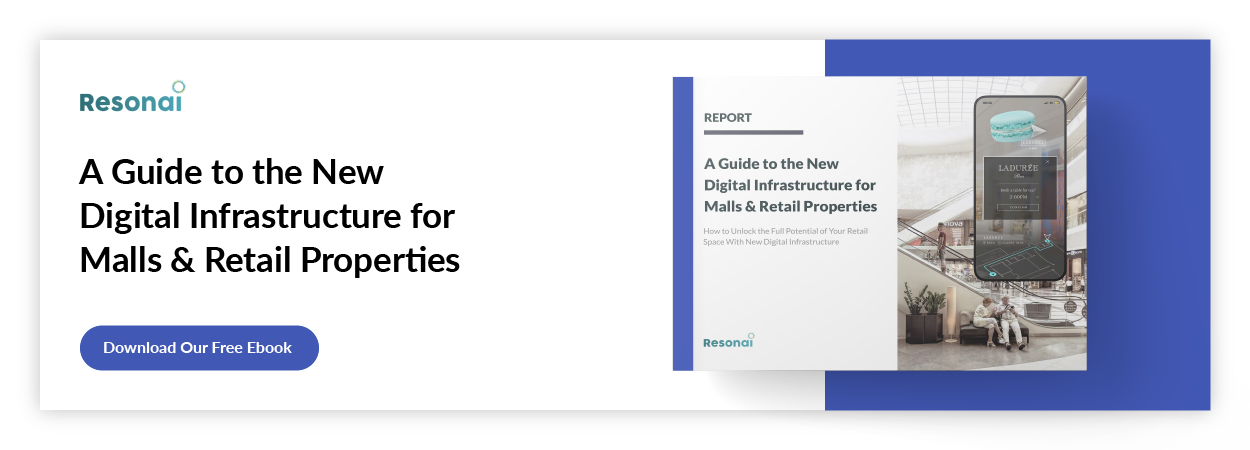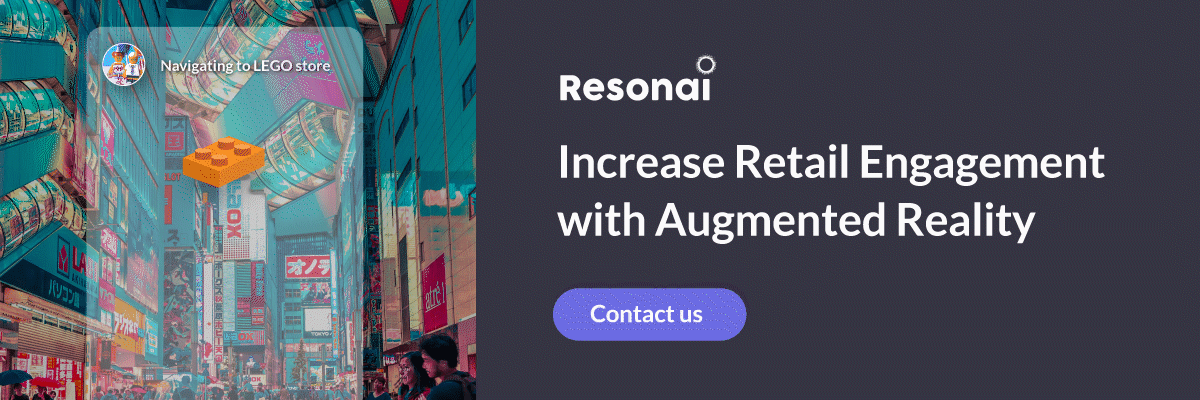5 High-Value Use Cases For Retail Analytics
How brick-and-mortar retailers use data to get the most out of their locations

Brick-and-mortar retailers have been through a gauntlet of change. The rise of ecommerce put many storefront-driven brands out of business, and the pandemic only accelerated that trend. But the winds are beginning to blow in the other direction, and now, some of tech’s most exciting innovations are revolutionizing in-person shopping. One of the most important of these is the surge in retail analytics use cases across the space.
If you’d like to learn more about this development, then you’ve come to the right place. This article covers five of the most high-value retail analytics use cases.
Want to learn more about how retail analytics impact your world? Check out our article, "Retail Analytics: The Ultimate Guide"
Jump to a section
What is the ROI of retail analytics?
5 high-value retail analytics use cases
How to implement retail analytics
What are retail analytics?
Retail analytics translate real-world business activity into quantifiable data to drive better business decision-making. This data can cover consumer behavior patterns, supply chain information, inventory updates, and more. Retailers can operationalize these insights in numerous ways, including:
- Optimizing store layout and design
- Iterating on product displays
- Improving pricing strategy
- Enhancing promotional campaigns
- Building comprehensive customer personas
- Driving personalized product recommendations
While the sources of this data are endless, not all analytics are created equal. Retail analytics derived from real-time consumer data collected via mobile app usage are particularly high-yield.
What is the ROI of retail analytics?
As you might expect, the use of data-driven decision-making correlates with significant improvements in business performance. A recent survey of respondents from almost 300 supermarkets, department stores, and ecommerce companies revealed a direct connection between the use of retail analytics and returns: 68% of respondents reported at least 5% growth; 38% reported at least 10% growth; and 27% reported at least 15% growth.
5 high-value retail analytics use cases
Behavioral analytics
Properly optimizing the in-store experience requires an in-depth understanding of how consumers move through the retail space, and customer flow analytics provides exactly these insights. Provided through tech platforms like Vera, retailers can discover how traffic density varies across floorspace, identify points of interest, and spot shoppers’ navigation patterns. In the case of Vera, this data can be collected and analyzed in real-time, ensuring retailers have the most current information possible.
Behavioral analytics like these enable retailers to make relevant, data-based decisions on in-store experience design. Instead of relying on best practices, retailers can tailor floor layouts to match the particular behavioral patterns of their consumers. Essentially, this technology brings a level of experiential optimization once only possible on the web to real-world commercial environments, significantly enhancing the efficacy of commercial spaces.
For more insights on store layout optimization, read Retail Store Layout: Designing For Maximum Revenue.
Recommendation engines
For years, online retailers have leveraged the power of analytics to offer their customers personalized product recommendations. This innovation has been integral to the success of ecommerce giants like Amazon. But, emerging technologies like augmented reality (AR) are helping level the playing field for brick and mortar businesses by providing a natural platform for deploying this analysis to drive purchasing behavior.
By analyzing purchasing behavior and predicting future demand, retailers can deliver personalized product recommendations through AR-enhanced in-store shopping experiences. Like online shopping, these custom notifications can be pushed to consumers according to their proximity and behavior during the natural points in browsing. Personalized recommendations can dramatically increase customer engagement, as research by Accenture has revealed that 65% of consumers prefer retailers that know their shopping history. Global retailer Auchan deploys a simplified version of this approach to boost foot traffic at their locations.
Inventory optimization
The goal of inventory management is to optimize the relationship between supply and demand. While this process was once the domain of educated guesses, managers can now leverage a deep set of data and analytical tools to make stocking decisions. For example, America’s largest grocer — Kroger — has been using an in-house analytics team to analyze everything from economic trends to shopper behavior to accurately forecast demand for years.
One of the most exciting innovations in this area is the use of real-time customer flow statistics to anticipate inventory needs. Instead of relying on relevant historical data to project demand, retailers can also pull data from across the entire retail enterprise to make stocking decisions. While this inventory management model is preferable in almost any circumstance, it’s even more essential during periods of unprecedented consumer behavior like has been seen throughout the pandemic. Having comprehensive and current data empowers inventory managers to identify trends and respond appropriately.
Predictive pricing
Price is one of the most powerful levers in commerce, and the increasing availability of data and analytical tools gives retailers an even better grasp of it. Now, retailers can use a multitude of inputs to drive their pricing strategies. These include everything from fundamentals like the cost of goods sold and competitor pricing to advanced analytics like weather forecasts and real-time customer behavioral data. With this data, retailers can use analytics to predict the ideal sale duration, identify customer price tolerance, and determine other critical elements of their pricing strategy.
Smart merchandising
From promotions to display optimization, merchandising is the art and science of selling retail goods, and few retail analytics use cases have a more direct impact on business performance. Access to store-level data and customer behavior analytics — combined with machine learning-driven analysis — are transforming how retailers are running their in-store campaigns.
The growing use of AR in shopping experiences adds another layer of actionable data to this trove, allowing retailers to get feedback on their display strategies faster than ever before. AR experiences serve as a testing ground for product placements, displays, signage, and other promotional collateral. These applications can then relay real-time data on the effectiveness of these campaigns, allowing retailers to quickly and cost-effectively iterate on campaign concepts before committing significant resources.
Back to topHow to implement retail analytics
Information is power — always has been and always will be. While 21st-century innovations have largely favored online retailers, emerging technologies like AR have changed the game for brick and mortar businesses. Now, they too can have access to real-time data about their consumers to optimize their store layouts, test campaigns, improve inventory decisions, and more.
For forward-thinking retailers, this is all excellent news. If you’re interested in learning more about some of the most exciting retail analytics use cases, then reach out. Our AR platform is powering the next generation of in-store data, and we’d love to help you leverage it to grow your business.
Subscribe to Our Newsletter!
Read More
The 8 Best Retail Analytics Companies For Modern Vendors
Digital stores thrive on analytics: tracking where visitors come from, how long they spend on each...
Customer Analytics In Retail: How Data Drives Dollars For Vendors
Business is an information game: the more you know, the better your decisions, and the higher your...
Previewing the Mall of the Future
Reports of the mall’s death have been greatly exaggerated. Online shopping may be de rigueur today,...

